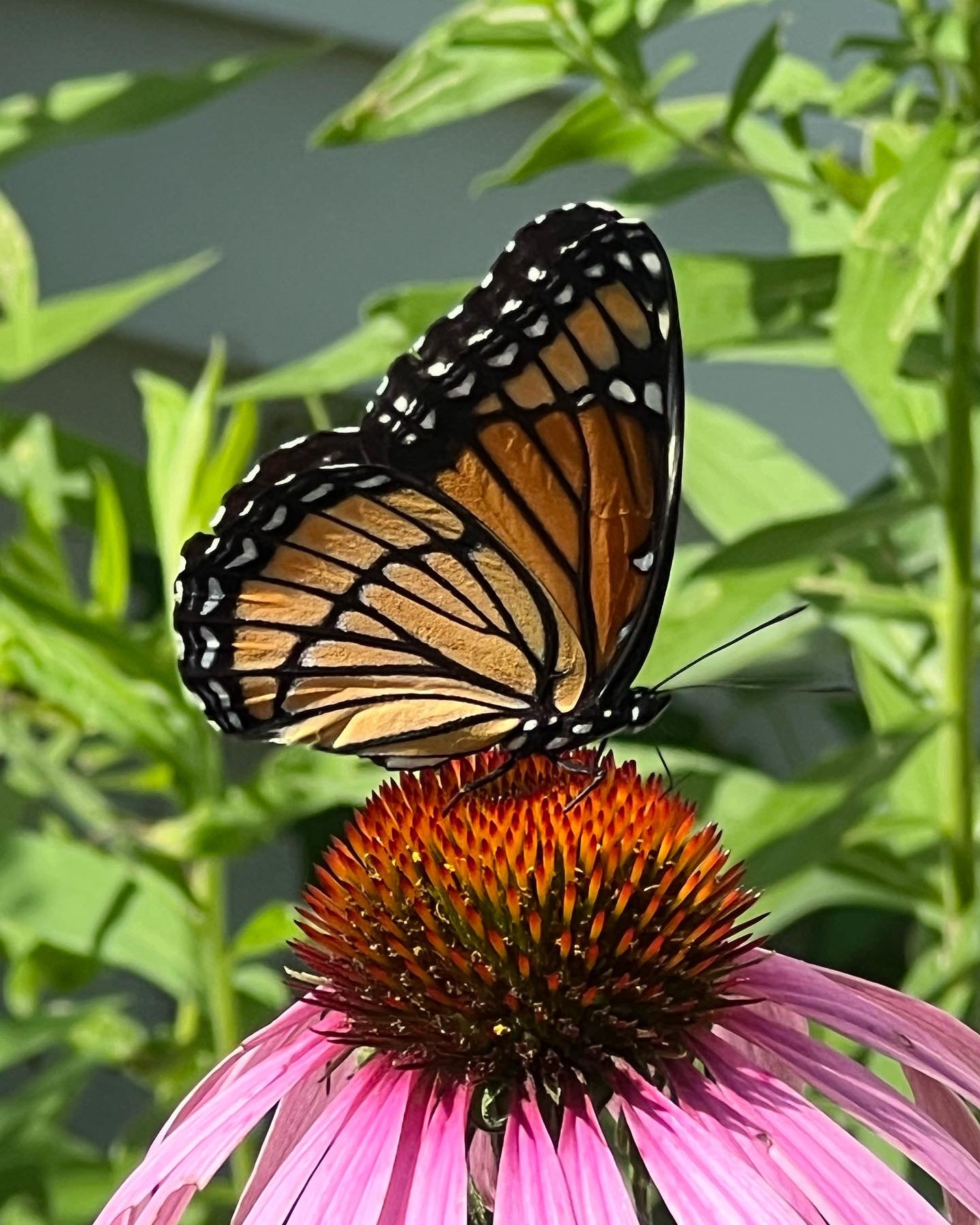Monarch Butterfly Visiting Echinacea purpurea
Photo by Ilana Sobo
In The Garden, Vermont
Why Do Monarchs Love Echinacea purpurea?
I wondered too and this is what I learned!
Monarch butterflies (Danaus plexippus) are drawn to Echinacea purpurea, commonly known as purple coneflower, for a variety of reasons tied to its biology and ecological benefits. This perennial native plant, beloved for its striking purple petals and prominent cone-shaped center, offers a rich nectar source and an ideal feeding platform for pollinators like monarchs. Here’s a detailed look at why monarchs favor Echinacea purpurea:
Nectar Source for Fuel
Monarchs require abundant energy for their long migrations and daily activities, and Echinacea purpurea provides a steady supply of high-energy nectar. The structure of the flower’s central cone is packed with florets that continuously produce nectar over an extended bloom period, often from midsummer to early fall. This aligns perfectly with the monarch’s migratory timeline, offering critical sustenance during their journey.
Accessible Flower Structure
The open, daisy-like shape of Echinacea makes it easy for monarchs to land and feed. Its prominent central cone provides a stable perch for these delicate insects, allowing them to extract nectar efficiently. Unlike some tubular flowers, Echinacea’s accessible design caters to a wide range of pollinators, including monarchs.
Prolonged Bloom Period
Echinacea purpurea is known for its extended flowering season, which can last several months. This long-lasting bloom ensures that monarchs and other pollinators have access to nectar throughout critical times in their lifecycle, particularly during late summer and early fall when food sources can become scarce.
Native Plant Benefits
As a native plant to North America, Echinacea purpurea plays a crucial role in supporting native pollinator species like monarchs. Native plants are better adapted to local climates, soil conditions, and ecosystems, providing reliable and sustainable resources for wildlife. The deep roots of Echinacea also help maintain soil health and prevent erosion, indirectly supporting habitats monarchs rely on.
Companion Plants in Monarch Gardens
Echinacea purpurea is often planted alongside other butterfly-friendly species like milkweed (Asclepias spp.), which is the host plant for monarch larvae. This pairing creates a pollinator-friendly environment where adult monarchs can find nectar while their caterpillars feed on milkweed leaves. Gardens designed with Echinacea and milkweed together become vibrant waystations for monarchs during their migration.
Pollen for Other Pollinators
While monarchs primarily seek nectar, the pollen-rich florets of Echinacea purpurea benefit other pollinators like bees and birds, indirectly supporting the ecosystem that monarchs depend on. A thriving pollinator community strengthens plant reproduction, ensuring that vital nectar sources like Echinacea persist year after year.
Planting Tips to Attract Monarchs
Sunlight: Plant Echinacea purpurea in full sun, as monarchs are more likely to visit flowers in sunny locations.
Spacing: Allow adequate space between plants to provide monarchs with unobstructed access to flowers.
No Pesticides: Avoid using pesticides or herbicides, which can harm both the monarchs and their food sources.
Diversity: Pair Echinacea with other nectar-rich plants that bloom at different times to create a continuous food supply for monarchs throughout the season.
By planting Echinacea purpurea, gardeners can create a haven for monarch butterflies while also enjoying the plant’s resilience, beauty, and ecological benefits. It’s a win-win partnership that supports pollinator health and biodiversity.

